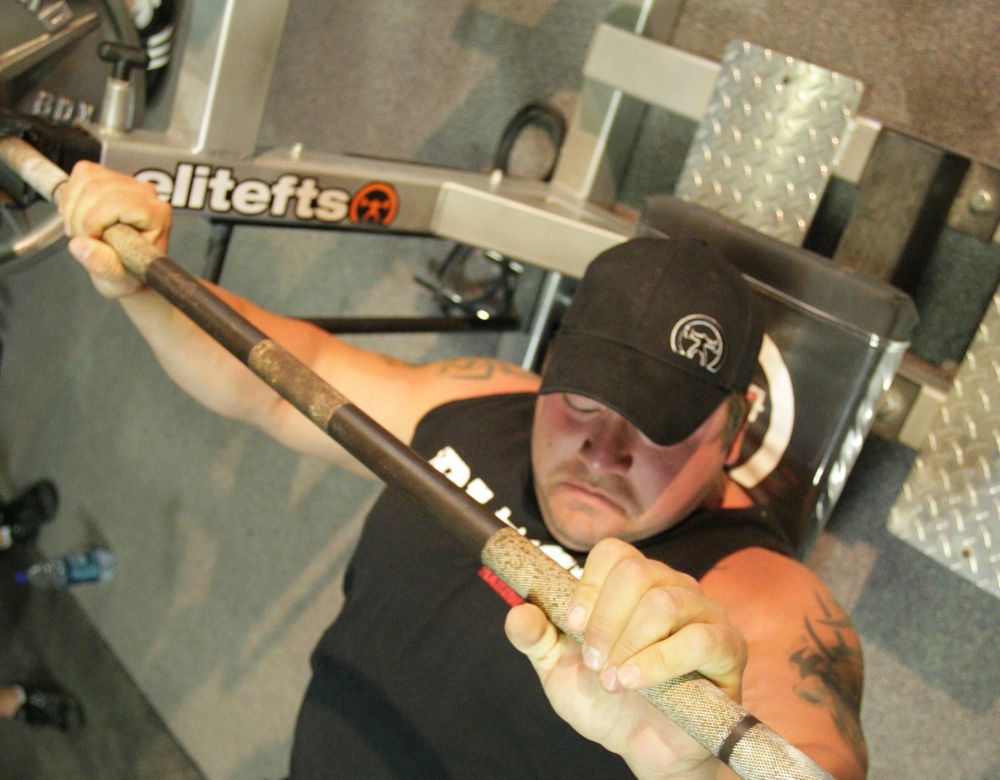
If your goal is to develop overwhelming starting strength in the bench press, can you simply pause the bar for one second on your chest and circumvent the whole stretch shortening cycle? The answer to this question is both yes and no. A recent study by the Physical Education Department at the Josef Pilduski University in Warsaw, Poland, in conjunction with the Biomechanics Department at Somelweis University in Budapest, Hungary, found that a one second pause at the bottom of the bench press movement causes a 55 percent disruption of the benefits derived from stretch-shortening during the bench press. That means that 45 percent of the stored elastic energy is still present after a one second pause. Pausing will help develop starting strength, but it still does not completely bypass the benefits of the stretch reflex. How is this paradox remedied?
I would like to introduce you to a GREAT exercise for developing starting strength. The exercise I'm referring to is something that I call the “dead bench,” and it's a great way to make your bench gains come alive! The dead bench has helped me improve my explosive power during that crucial initial period of clearing the bar off my chest. The lift is performed by pressing dead weight off your chest (as shown in the video below). There's no eccentric motion to store elastic energy, which is why the dead bench is a superior exercise for building blasting power in the initial phase.
The dead bench should be performed for single repetitions only, because, as the study indicates, even after a pause in the bench press motion, almost half of the stored elastic energy remains. For higher volume, lower intensity training, rather than pumping out rep after rep, you can use multiple singles followed by shorter rest intervals.
Proper progression is where most strength programs fail. One can know the science of training front to back, but if you do not understand the art of progression, you'll be lost in a sea of missed gains. Some variables to increase intensity in the dead bench are: shortening rest intervals, adding more singles with the same weight, and adding more weight. Focusing only on increasing bar weight is a good prescription for running yourself into the ground of failed progress. However, you can consider lengthening the rest intervals and decreasing the number of singles as the weight increases. An example of this would be starting out with eight singles with a one-minute rest in between lifts, and by week six, performing four singles with three-minute rest. Obviously, the weight would increase each week during this hypothetical cycle (excluding deload weeks).
If your starting strength in the bench press is what’s holding your numbers down, then give this exercise a try. I promise, you won't be disappointed. Now start blasting!
Some points to remember
- Start the weight at chest level, but no more than two inches off the chest
- To maximally develop starting strength and rate of force development push the bar as hard and fast as possible
- In regard to hand placement, use your raw competition bench press grip for the greatest carry over
- Foot placement is the same as a normal bench press
- Use singles not reps
Here is bodybuilder/powerlifter in training of Metroflex Gym, John Combs, doing a very brief demonstration of the dead bench:
Here's all-around West Texas Bad Ass Jeff Lofton, pushing some weight on the dead bench!








